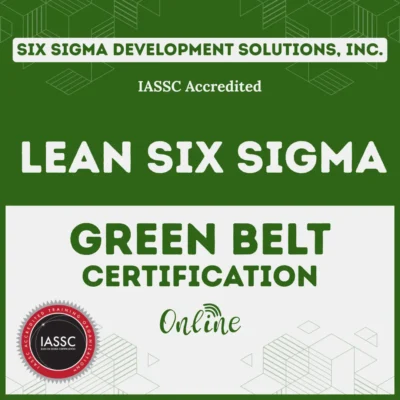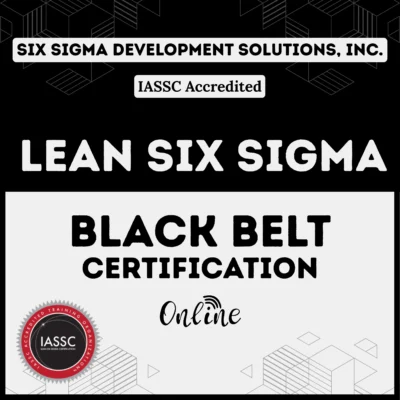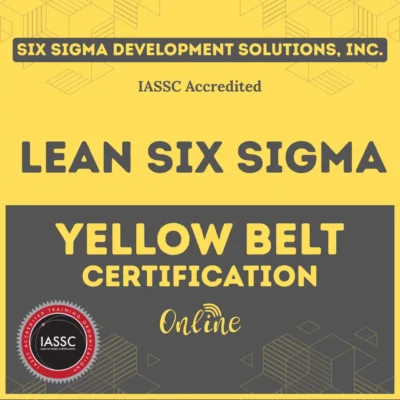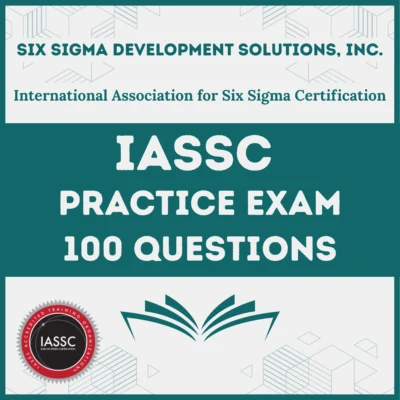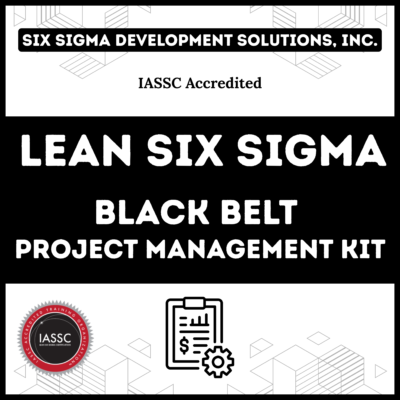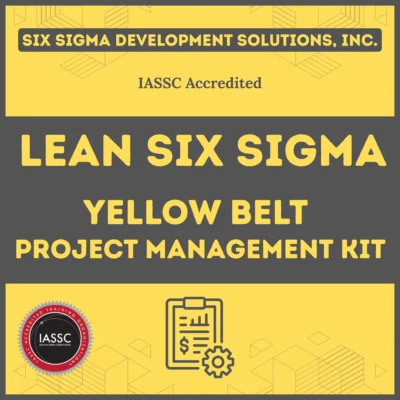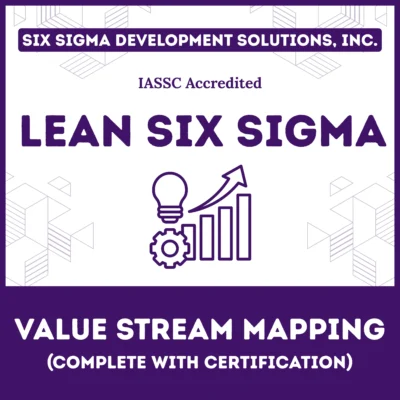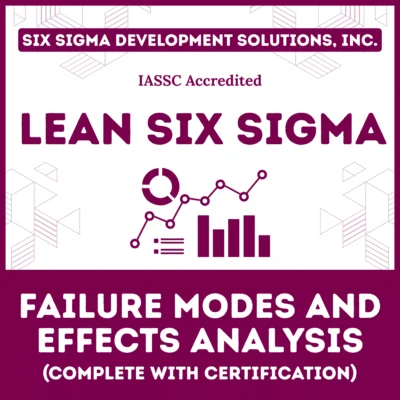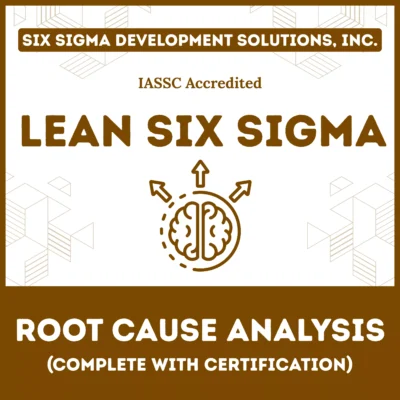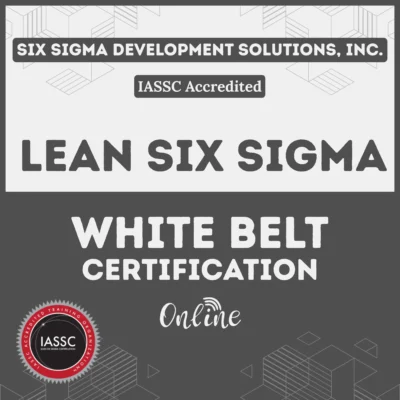Born from Motorola’s quest for perfection in the 1980s, this data-driven methodology has evolved into a global powerhouse for quality improvement, adopted by giants like General Electric and Amazon. But earning a Six Sigma certification? It’s your ticket to leading those transformations.
If you’re wondering, how do you prepare for the Six Sigma certification exam and what are the requirements?, you’re in the right place. This guide breaks it down simply: from belt levels to eligibility hurdles, study strategies to exam-day triumphs.
Whether you’re a newbie eyeing Yellow Belt basics or a pro gunning for Black Belt glory, we’ll equip you with actionable insights.
Table of contents
What is Six Sigma Certification and Why Pursue It?
Six Sigma certification validates your expertise in using statistical tools and Lean principles to reduce defects, eliminate waste, and boost efficiency. At its core, it’s about achieving near-perfection—aiming for just 3.4 defects per million opportunities—through the DMAIC framework: Define, Measure, Analyze, Improve, and Control. Certifications come in “belt” levels, mirroring martial arts progression, each building skills for real-world process optimization.
Why chase it?
Certified professionals command premium salaries—Green Belts average $118,000 annually, Black Belts up to $135,400—while opening doors in manufacturing, healthcare, finance, and tech. Employers value the problem-solving prowess, with 70% of Fortune 500 companies integrating Six Sigma.
Plus, it’s a career accelerator: imagine leading projects that slash costs by 20% or more. Transitioning from theory to practice, understanding requirements is your first step toward that Black Belt confidence.
Public, Onsite, Virtual, and Online Six Sigma Certification Training!
- We are accredited by the IASSC.
- Live Public Training at 52 Sites.
- Live Virtual Training.
- Onsite Training (at your organization).
- Interactive Online (self-paced) training,
Six Sigma Belt Levels
Six Sigma’s belt system structures learning progressively, ensuring you master fundamentals before tackling complexity. Here’s a breakdown of the main levels, including roles, focus areas, and why each matters.
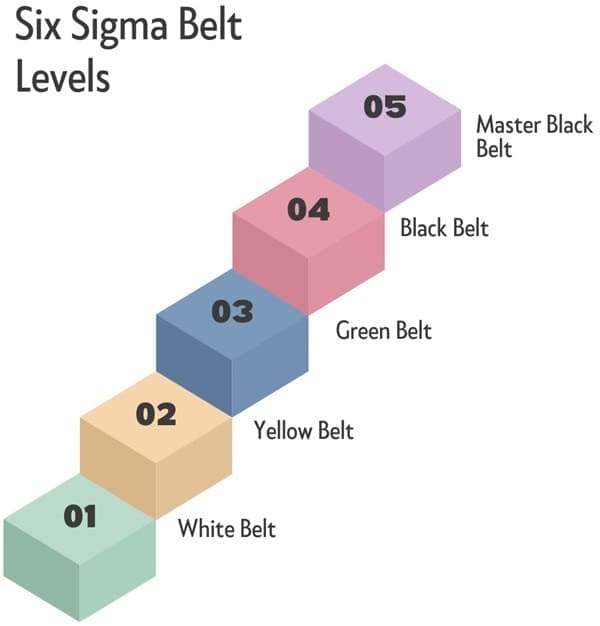
White Belt
White Belt kicks off your journey with a high-level intro to Six Sigma concepts. Ideal for frontline workers or anyone curious about quality improvement, it covers basics like DMAIC and waste reduction—no prior experience needed.
- Requirements: No prerequisites; complete a short online course (4-8 hours) and pass a basic exam (20-30 multiple-choice questions, 60-70% pass rate).
- Role: Support projects by collecting data and understanding team dynamics.
- Time & Cost: 1-2 days; $50-150.
White Belts build foundational vocabulary, setting the stage for deeper dives.
Yellow Belt
Stepping up, Yellow Belt introduces practical tools like process mapping and root-cause analysis. Perfect for team members contributing to improvement initiatives.
- Requirements: White Belt optional; 16-20 hours of training, then a 40-question exam (70% pass).
- Role: Assist in data gathering and simple analyses under Green or Black Belt guidance.
- Time & Cost: 1 week; $200-400.
This level sharpens your eye for inefficiencies, making you invaluable in cross-functional teams.
Green Belt
Green Belt dives into leading smaller projects, mastering stats like hypothesis testing and control charts. It’s the sweet spot for mid-level pros aiming to drive measurable change.
- Requirements: 3 years full-time work experience in quality-related roles (per ASQ); 40-80 hours training; pass a 100-110 question exam (70-75% pass); some providers require a project.
- Role: Lead DMAIC projects part-time, analyze data, and report results.
- Time & Cost: 2-4 weeks; $300-1,000 (ASQ exam: $369 non-members).
Green Belts bridge strategy and execution, often boosting promotions by 15-20%.
Black Belt
Black Belt elevates you to full-time project mastery, handling complex analyses like design of experiments (DOE) and financial impact assessments.
- Requirements: Green Belt certification; 3-5 years experience; 100-160 hours training; 150-question exam (70% pass); complete 1-2 projects saving $100K+.
- Role: Lead enterprise-wide initiatives, mentor Green Belts, and align with business goals.
- Time & Cost: 4-6 months; $1,000-3,500 (ASQ: $489 exam).
These professionals command respect, often heading departments with ROI-focused transformations.
Master Black Belt
For veterans, Master Black Belt means strategic oversight, training others, and innovating methodologies.
- Requirements: Black Belt; 5+ years leading projects (10+ total); portfolio review; advanced exam or coaching demonstration.
- Role: Consult on organization-wide deployments, develop custom tools.
- Time & Cost: 6-12 months; $2,000-5,000.
This elite level positions you as a Six Sigma architect, with salaries exceeding $150K.
Each belt builds on the last, fostering a culture of continuous improvement. Now, let’s explore the nitty-gritty of meeting those requirements.
Six Sigma Certification Requirements
Requirements vary by provider—ASQ, IASSC, CSSC—but core elements remain consistent. No universal standard exists, so choose accredited bodies for credibility. Here’s the 2025 scoop:
General Prerequisites Across Belts
- Experience: White/Yellow: None. Green: 3 years full-time in relevant fields (e.g., manufacturing, IT). Black: Green Belt + 3-5 years. Master: Extensive portfolio.
- Training: Mandatory for Green+; self-study possible for lower belts. ASQ requires 40 hours for Green, 80 for Black.
- Exam: Proctored, multiple-choice/true-false; open-book for some (e.g., CSSC). Validity: 3 years; recertify via PDUs or re-exam.
- Projects: Green: Optional/recommended. Black: 1-2 completed. Master: 10+.
Provider-Specific Nuances
- ASQ: Strict—3 years experience, no waivers; photo ID for exam. Costs: Green $369, Black $489.
- IASSC: Experience optional; focus on exam (100 questions, 70% pass). No projects required.
- CSSC: No prereqs for Green; unlimited retakes within 12 months ($159 fee).
In 2025, expect digital exams via Pearson VUE, with AI proctoring for accessibility. Budget $200-5,000 total, including training. Pro tip: Verify employer reimbursement—many cover 80-100%. With requirements clarified, preparation becomes your superpower.
Must Check: IASSC (International Association for Six Sigma Certification) Practice Exam (100 Questions)
How to Prepare for the Six Sigma Certification Exam?
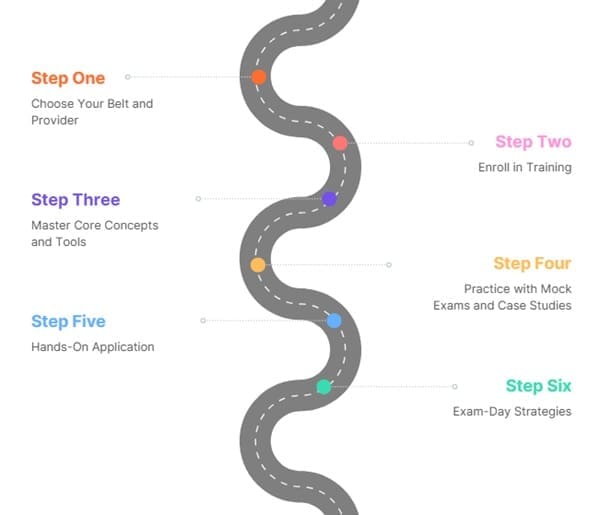
Preparing for your Six Sigma exam isn’t a sprint—it’s a strategic marathon blending theory, practice, and mindset. Aim for 1-3 months, depending on belt level. Here’s how to ace it.
Step 1: Choose Your Belt and Provider
Assess your goals: Process supporter? Go Yellow. Project leader? Green. Start with a self-audit: Do you grasp DMAIC? Select ASQ for rigor or IASSC for flexibility.
Step 2: Enroll in Training
Structured learning trumps solo study. Options:
- Online/Self-Paced: Coursera or CSSC guides ($349 for multi-belt bundles).
- Instructor-Led: 6Sigma.us or Purdue (virtual/in-person, $1,000+).
- Blended: ASQ’s e-learning with simulations.
Step 3: Master Core Concepts and Tools
Dive deep:
- DMAIC Breakdown: Define (charters, SIPOC); Measure (process capability); Analyze (fishbone, Pareto); Improve (DOE); Control (SPC charts).
- Lean Integration: Value stream mapping, 5S, Kaizen.
- Stats Essentials: Hypothesis testing, regression, ANOVA—practice with Minitab or Excel.
Step 4: Practice with Mock Exams and Case Studies
Simulate the real deal:
- Take 5-10 practice tests (ASQ question banks, $100).
- Analyze case studies: E.g., reducing hospital wait times via DMAIC.
- Target 80%+ scores; review weak areas like stats (common pitfall).
Step 5: Hands-On Application
Theory sticks with practice. For Green/Black, tackle a mini-project: Map your workflow, identify wastes, measure baselines. Tools like free Minitab trials help.
Step 6: Exam-Day Strategies
- Logistics: Book via provider; arrive early with ID.
- Tactics: Read questions fully; eliminate wrong answers; flag tough ones.
- Mindset: Sleep well, stay calm—exams are 3-4 hours.
Top Resources for Six Sigma Exam Preparation
Fuel your prep with proven tools:
- Books: “The Six Sigma Handbook” by Pyzdek (comprehensive reference); “Lean Six Sigma for Dummies” for beginners.
- Online Platforms: ASQ’s prep courses ($500+ with pre/post-tests); Coursera’s Google Lean Six Sigma ($49/month).
- Freebies: IASSC BoK downloads; CSSC self-study guides; Purdue’s blog for tips.
- Software: Minitab (trial for stats); QI Macros Excel add-in.
- Communities: LinkedIn groups, Reddit’s r/SixSigma for peer advice.
Invest $100-500 wisely—quality trumps quantity. With resources in hand, common pitfalls await; let’s sidestep them.
Also See: IASSC (International Association for Six Sigma Certification) Practice Exam (100 Questions)
Common Mistakes to Avoid During Preparation
Even pros stumble—don’t join them:
- Cramming Without Practice: Stats demand repetition; solve 200+ problems.
- Ignoring Lean: Six Sigma + Lean = powerhouse; skip one, and you’re half-prepared.
- Neglecting Projects: For Black Belt, incomplete projects doom applications.
- Underestimating Time: Green Belt needs 40+ hours; block your calendar.
- Solo Studying: Join study groups for motivation and fresh perspectives.
Spot these early, and your pass rate soars to 90%+.
FAQs About Six Sigma Certification Exam Preparation
How do you prepare for the Six Sigma certification exam?
Prepare by selecting a belt level, completing 40-160 hours of training, mastering DMAIC and stats via practice exams, and applying concepts through projects. Aim for 1-3 months of focused study.
What are the requirements for Six Sigma Green Belt certification?
Requirements include 3 years of work experience, 40+ hours training, and passing a 100-question exam (70% pass). Providers like ASQ mandate this; IASSC waives experience.
Is experience required for all Six Sigma belts?
No—White and Yellow Belts need none. Green and Black require 3-5 years in quality roles; Master Black Belt demands a portfolio of 10+ projects.
How long does it take to prepare for the Six Sigma Black Belt exam?
Typically 4-6 months, including 100+ hours training, project completion, and mock exams focusing on advanced tools like DOE.
What is the pass rate for Six Sigma exams?
Around 70-80% for prepared candidates; practice tests boost success to 90%+.
Final Words
Preparing for the Six Sigma certification exam isn’t just about passing a test—it’s about igniting a mindset of relentless improvement that propels your career and organization forward. From grasping belt levels and navigating requirements to wielding study strategies like a pro, you’ve now got the roadmap to success in 2025. Remember, Six Sigma thrives on discipline: commit to consistent practice, embrace hands-on projects, and learn from every setback.

About Six Sigma Development Solutions, Inc.
Six Sigma Development Solutions, Inc. offers onsite, public, and virtual Lean Six Sigma certification training. We are an Accredited Training Organization by the IASSC (International Association of Six Sigma Certification). We offer Lean Six Sigma Green Belt, Black Belt, and Yellow Belt, as well as LEAN certifications.
Book a Call and Let us know how we can help meet your training needs.






